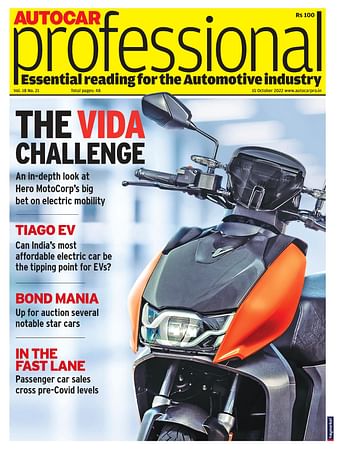Jaguar Land Rover reveals new driver monitoring safety systems
The manufacturer has revealed car technologies that monitor a driver's levels of concentration, and state of health.
Jaguar Land Rover is developing a system that monitors a driver's brainwaves to see if they are alert and concentrating.
The technology, called Mind Sense, uses embedded sensors and an on-board computer to monitor brainwaves via the driver's fingers on the steering wheel.
If the system detects a serious drop in concentration, warning signals, such as vibrations in the steering wheel or pedals, attempt to raise the driver’s awareness. Additional warning sounds, or icons, can be activated if necessary.
Because they're further away from the driver’s head, software amplifies the brainwave signals in the fingers. The technique is currently used by NASA and the US bobsleigh team to develop concentration and focus.
Another monitoring system is being developed that measures the driver’s heartbeat and respiration rate to detect drowsiness, stress, or a serious medical condition.
The monitor is incorporated in the back of the driver’s seat, so as not to obstruct the driver. It is hoped that it will be able to automatically adjust interior conditions, such as temperature, to relax the driver. The system may, eventually, be able to bring the car safely to a stop in a medical emergency.
The technology, called Driver Wellness Monitoring, is still in the early stages of development and isn't expected to make production for eight to 10 years.
Also among the host of tech unveiled by JLR, is a haptic accelerator pedal. This transmits vibrations through the pedal to alert the driver to potential dangers. It will, initially, be part of JLR's Bike Sense safety tech.
The alert comes in the form of either a nudge, a series of vibrations or a double pulse. It may also offer some resistance to warn the driver of a change in speed limits.
It uses a decoupled actuator behind the pedal, along with a torque motor, to ensure that the fuel injection is not affected by the movement of the pedal and, says JLR, will make production in the next three to five years.
Haptic technology is also being used in JLR’s Predictive Touch and Mid Air Haptics system. This predicts which functions the driver intends to select on the touchscreen, making it easier to operate and less distracting to use on the move.
Cameras inside the car work with path-tracking filters to predict the driver's choice, based on the trajectory of their finger. To help guide the finger to the right area, and reduce driver distraction, a high-frequency sound is transmitted to create a touch sensation in mid-air.
RELATED ARTICLES
Sept 2024 From R&D incentives to EV infrastructure: What auto components industry expects from Budget 2024
Sept 2024 From R&D incentives to EV infrastructure: What auto components industry expects from Budget 2024
US car majors hit the brakes on driverless cars
Ford Motor and Volkswagen to close self-driving startup Argo AI, due to lack of technology and clear regulations.
Autoliv and Geely to develop advanced safety tech for future vehicles
Scope of cooperation includes safety for high-level autonomous driving, intelligent steering wheel technology, a 360deg ...






 18 Jun 2015
18 Jun 2015
 2973 Views
2973 Views


















 Autocar Pro News Desk
Autocar Pro News Desk




